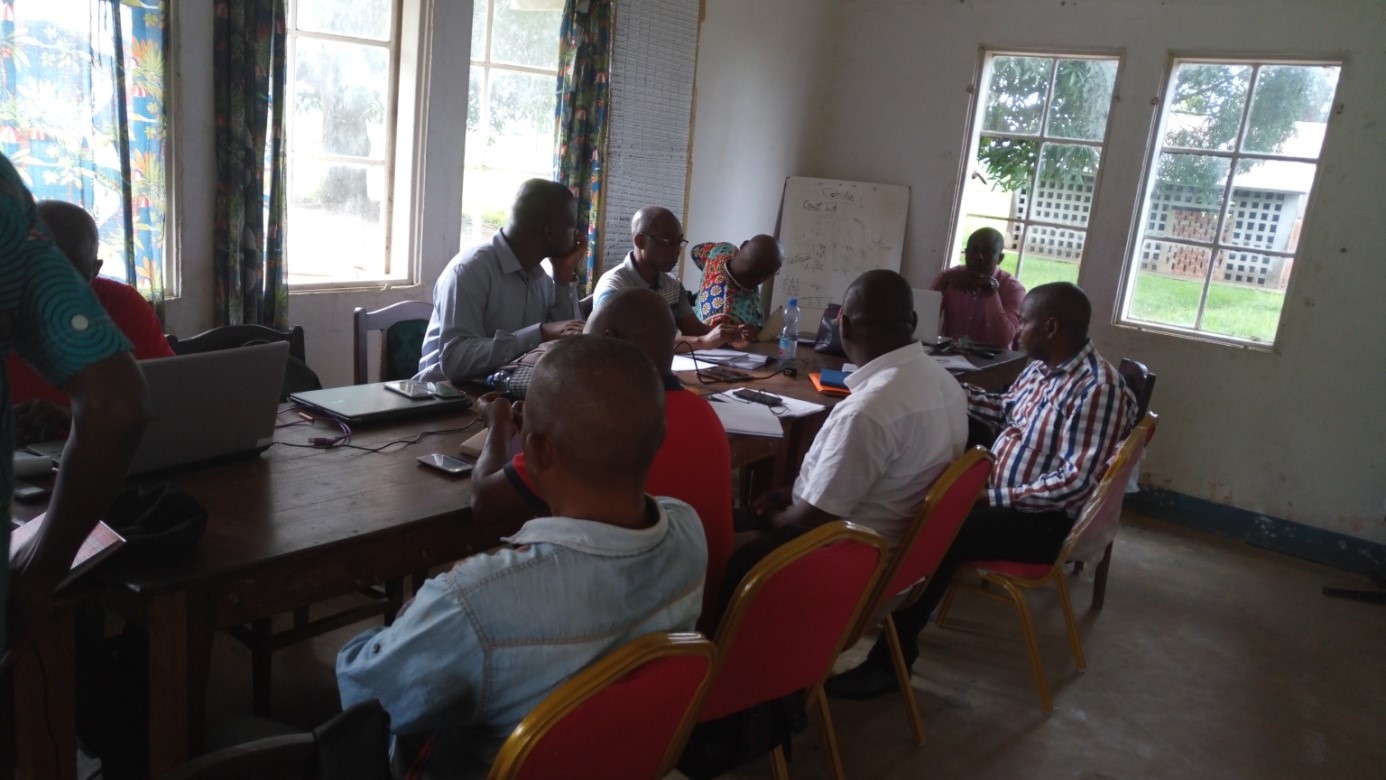RIPSEC Democratic Republic of Congo - Functional Evaluation of the Learning and Research Health districts (LRH) by the pairs
Discussion details
One of the objectives of the RIPSEC program package is focussed in strengthening the Public Health Schools training capacity through the Learning and Research Health districts (LRH) creation for universal health coverage. The transformation of the health district in LRH has two phases: the first one is to improve the functionality of the Health district and the second will be characterized by the beginning of peer learning and mentoring trainees. The second phase of the Health districts transformation can only be launched if they have reached an acceptable level of functionality and they have acquired some experiences to share with other actors.
With this in mind, it was decided to evaluate the functionality of the peer (LRH) both to analyse the level of functionality achieved and to stimulate / accelerate the transformations put in place to accommodate the learners.
This functional assessment of the LRH was conducted from January to February 2018 by peers. Three evaluators teams were made of three RIPSEC offices based in different Schools of Public Health (ESP UNIKIN-Gombe Matadi LRH, ESP UNILU –Kisanga LRH and ERSP / BUKAVU-Walungu LRH). To facilitate peer learning, each RIPSEC has evaluated another Health district outside the one in which he is responsible for processing. Collected data concerns topics such as the transformation of the LRH management by the health district management team; the transformation of at least two front-line services and at least one service of the reference general hospital: the transformation of at least one interaction function between the two types of services (Health centre and General referral hospital); transformation of management and decision-making mechanisms & systematic documentation; transformation of (LRH) interactions with its environment: internal and external networking; participatory analysis of the operationalization of the (LRH) and perspectives; the lessons learned by the evaluators for their own LRH as well as the more general lessons. For each theme addressed, the data were collected in terms of the desired situation; changes, initiatives, processes observed; levers and barriers as well as results obtained.At the end of these missions, each team of evaluators prepared their report which was discussed with the team of the health district and RIPSEC antenna visited as well as the Provincial Division of Health. The three reports were then discussed during of the meeting organized in Lubumbashi.
The essential changes retained are the following: The most significant change in Walungu LHR is the understanding of an integrated two-tier system by health district members;as part of the improvement of the organization of care provision, some LRH transformation projects were initiated after problem identification, among others: Leadership Strengthening (stewardship role); Improvement of formative supervision to improve the organization of care services; 'Referral and referral system enhancement to improve continuity of care. Changes in the health district Gombe Matadi LRH stewardship organization (restructuring health district team from 11 to 9 people, linking skills to standards, creating team spirit); supervision, coordination and planning and improvement of the nurse holder leadership in the coordination of the health area. The beginning of systematic documentation.The most notable changes observed in the Kisanga LRH, in terms of abilities, attitudes and working methods of the LRH providers are: Team restructuring, team work, introduction of new skills at the ECZ level; Development of a reflexive attitude of service providers Referral against reference with document Reorganization of work in CS: reduction of waiting time for patients at CS Ste Bernadette Beginning of systematic documentation.
Apart from these changes some points deserved special attention. To avoid the fragmentation of the development of the LRH . It would be better to focus on the systemic approach in the training of cadres of the health zones. At Gombe Matadi, there is a need to develop mechanisms to ensure the sustainability of actions influenced by performance-based financing. In urban areas, it will be difficult to have a HGR for each urban health district, given the ease of a city in relation to the movement of people from one health district to another? How to better manage political interference in technical decision-making at the LRH ?
Evaluating the functionality of peer Health districts is an interesting approach that has had beneficial effects for both evaluators and evaluators. it has enabled Health district management teams and mentors, on the one hand, to better understand the context and deepen the situational analysis and, on the other hand, to better identify the actions to be implemented with a view to speeding up the improvement of the functionality of the LRH .In perspective, it would be interesting to consider the evaluation of the functionality (quality of care, organization of services, etc ...) of the health centres and services of the HGR retained in the peer project. This approach could accelerate the quality of services and provide a gateway for the organization of the internship.

Article written by Pr Albert Mwembo Tambwe, Coordinator RIPSEC

Log in with your EU Login account to post or comment on the platform.